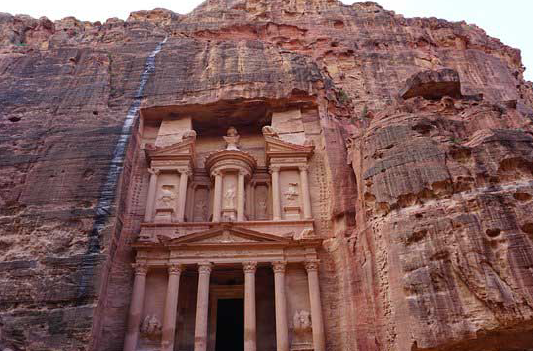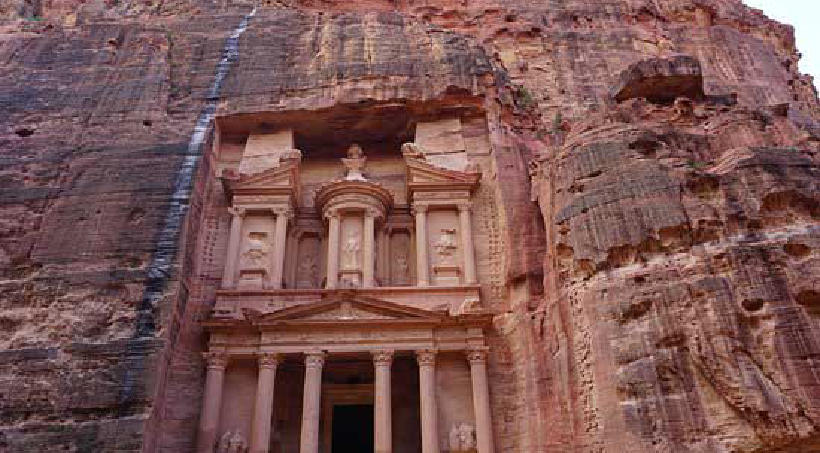Al Khazneh
Al Khazneh
(60 BC - 50 AD) TheTreasury, or Al Khazna' in Arabic, is the most spectacular monument carved by the Nabataeans.It stands an imposing 39.5m high and is impressively carved out of a single block. The monument's name comes from alocal Bedouin legend that pharaoh hid a treasure in the urn at the top, and you can see bullet holes from shooting at the urn to try to retrieve this treasure. In reality it is a mausoleum and would have been used for funerary purposes; many archaeologists believe it is the mausoleum of King Aretas IV (9 BC - 40 AD). The Nabataeans decorated the facades of their tombs with funerary designs and symbols related to the afterlife and death. The facade of the treasury reveals a Hellenistic influence, with six Corinthian capitals topped by a frieze of winged griffins and vases among scrolls. In the center of the facade is the goddess Isis, and she is surrounded by dancing Amazons (female warriors) with axes over their heads. At the top of the steps just before you enter the chamber, there are circular holes in the floor which were most probably used for sacrifices. Priests would enter the chamber and conduct their rituals. In 2004 three Nabataeans tombs were uncovered below the Khazna, which date to the end of the first century BC and have been identified as royal tombs.





